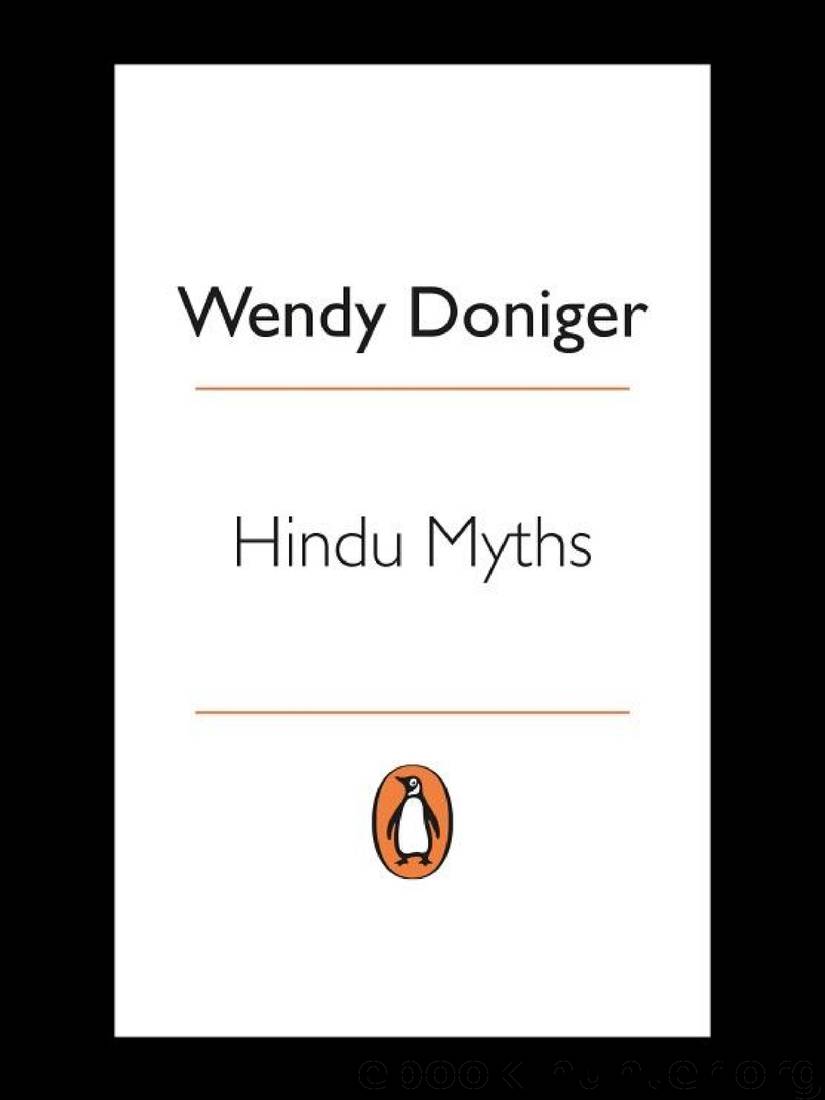Hindu Myths: A Sourcebook Translated From the Sanskrit by Wendy Doniger

Author:Wendy Doniger
Language: eng
Format: epub
Tags: Fiction, Fairy Tales; Folk Tales; Legends & Mythology, Religion, Hinduism, Sacred Writings, Social Science, Folklore & Mythology
Publisher: Penguin UK
Published: 2004-06-24T05:22:14+00:00
KŖṢŅA
Like Rāma, Kṛṣņa is an ‘Epic’ figure in two senses of the word: he appears in one of the two great Sanskrit Epics (the Mahābhārata), and he is a hero of the Epic type, a warrior and a king. But unlike Rāma, Kṛṣņa is not the central figure in his Epic; he is (like Rāma) a mortal warrior, but merely one among many, and his identification with Viṣņu only begins to take place in the latest parts of the Epic. The myth of the child Kṛṣņa is only dimly foreshadowed in Vedic and Epic texts, though it may have been a very old folk legend in the non-Sanskrit tradition (as yet unconnected with the god Viṣņu), and this part of the Kṛṣņa cycle is first told in full in the Harivaṃśa, the Purāņic appendage to the Mahābhārata.
Kṛṣņa and Balarāma are conceived by Devakī and transferred to other mothers
Two motifs in the myth of the birth of Kṛṣņa have long been noted as being strikingly similar to Christian, Greek, and other widespread myths: the slaughter of the innocents and the royal or divine child raised by foster-parents ignorant of his true majesty. Yet the particularly Indian elements of this myth by far outweigh the more universal themes and place the Kṛṣņa story securely in the midst of the great patterns of Hindu mythology.
The embryo that threatens and must be divided is reminiscent of the stories of Indra and the Maruts and of Skanda and the Kṛttikās.30 Moreover, there are stronger reverberations of the Skanda myth in the complicated incidence of multiple wombs and multiple mothers: both Kṛṣņa and Balarāma originate in the waters of hell, which is the womb of Kālī; they are then placed in Devakī’s womb, whence Balarāma is transferred before birth to the womb of Rohiņī and both are transferred after birth to the home of Yaśodā. (This multiplicity of wombs and children is further complicated by the fact that one Sanskrit word – garbha – may refer to womb, mother, embryo, or offspring, depending upon the context.) Thus Kṛṣņa is a king disguised as a commoner, as well as a god masquerading as a mortal.
Another tie with the Śiva corpus may be seen in the third child, Sleep, an aspect of Kālī who appears as Night in the Skanda myth; she colours the embryo of Pārvatī black so that, years later, Pārvatī quarrels with Śiva and goes away to obtain a golden skin.31 In the Kṛṣņa myth, Kālī appears first as Sleep (a manifestation of Viṣņu’s magic power of illusion),32 then as Night and as a dream, and finally as Death herself.
Finally, the astral symbolism of the Skanda birth myth is present, in a veiled form, here as well, for Rohiņī33 is the constellation who is the favourite wife of the moon, and the constellation ‘Victorious’ under which Kṛṣņa is born is at the meridional of the sky, the point marked by the mountain Kumeru (‘Bad Meru’), which is the demons’ equivalent of the gods’ Sumeru (‘Good Meru’); when the sun is there, in the equinox, the demons are ‘victorious’.
Download
This site does not store any files on its server. We only index and link to content provided by other sites. Please contact the content providers to delete copyright contents if any and email us, we'll remove relevant links or contents immediately.
| Bhagavad Gita | Upanishads |
| Vedas |
Fingersmith by Sarah Waters(2015)
Kundalini by Gopi Krishna(1827)
The Bhagavad Gita by Bibek Debroy(1668)
Indian Mythology by Devdutt Pattanaik(1626)
Wheels of Life by Anodea Judith(1612)
The Yoga of Jesus: Understanding the Hidden Teachings of the Gospels by Paramahansa Yogananda(1531)
The Man from the Egg by Sudha Murty(1500)
Autobiography of a Yogi (Complete Edition) by Yogananda Paramahansa(1489)
Chakra Mantra Magick by Kadmon Baal(1387)
The Book of Secrets: 112 Meditations to Discover the Mystery Within by Osho(1356)
Avatar of Night by Tal Brooke(1258)
The Sparsholt Affair by Alan Hollinghurst(1246)
Sparks of Divinity by B. K. S. Iyengar(1229)
Karma-Yoga and Bhakti-Yoga by Swami Vivekananda(1222)
The Bhagavad Gita (Classics of Indian Spirituality) by Eknath Easwaran(1208)
Gandhi by Ramachandra Guha(1196)
The Spiritual Teaching of Ramana Maharshi by Ramana Maharshi(1175)
Skanda Purana (Great Epics of India: Puranas Book 13) by Bibek Debroy & Dipavali Debroy(1140)
Hinduism: A Very Short Introduction (Very Short Introductions) by Knott Kim(1121)
